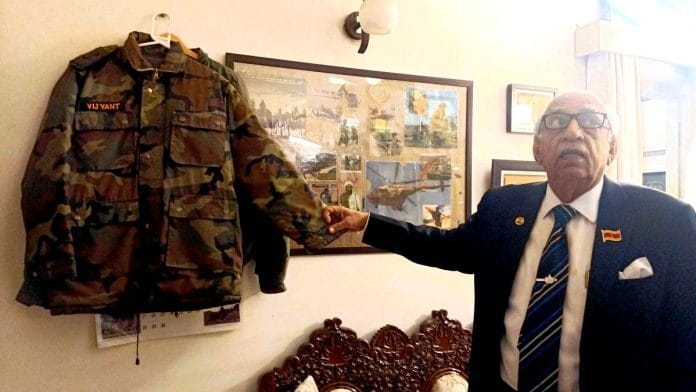New Delhi: For 25 years, Virender Thapar has climbed to the 16,000-foot battlefield where his son was killed in the Kargil War. This summer, heart surgery kept the retired colonel from making the trek to Dras. But he’s still at work, giving interviews and preparing speeches to keep his son Captain Vijayant Thapar’s memory alive.
“The country must remember him and his bravery during the Kargil months, but we celebrate him every single day. That place (Knoll in Dras) is my pilgrimage site,” said the 82-year-old at his Noida home, where almost every corner has reminders of his son.
Captain Vijayant Thapar was just 22 when he died on 29 June 1999 during the Kargil War, India’s first televised conflict. He was the youngest officer among the 527 Indian soldiers who laid down their lives in the desolate mountains. Serving with the 2nd Battalion of the Rajputana Rifles, he was killed in action during the Battle of Knoll and posthumously awarded the Vir Chakra for his valour.
But what truly etched him into the nation’s memory was a letter he wrote on blue paper to his family just before the final assault. He left it behind in the attack area in case he didn’t make it back.
“If you can, please come and see where the Indian army fought for your tomorrow,” he wrote. “As far as the unit is concerned the new chaps should be told about this sacrifice. I hope my photo will be kept in the ‘A’ coy mandir with Karni Mata.”
When I saw him in the hospital crib, he was kicking and moving his hands and legs. The first thing that came to my mind, seeing him so energetic and full of life, was ‘Robin’. And from that moment, we started calling him Robin
-Col (Retd) Virender Thapar
Since then, his father has honoured that request at the very spot where his son took his final breath. Every year, Colonel Thapar travels to Dras for Kargil Vijay Diwas on 26 July, when the Indian Army holds a memorial ceremony at the war memorial, Vijaypath. He also visits the small temple built by his son’s unit at the Knoll post.
But for Captain Vijayant’s mother, Tripta Thapar, it’s just too painful. She visited Dras once, in 2003, but it was so overwhelming that she has not been able to return.
“The place doesn’t just represent his bravery for the country. It brings us close to him,” she said. “But as a mother, it breaks me. That’s the place where I lost my son.”
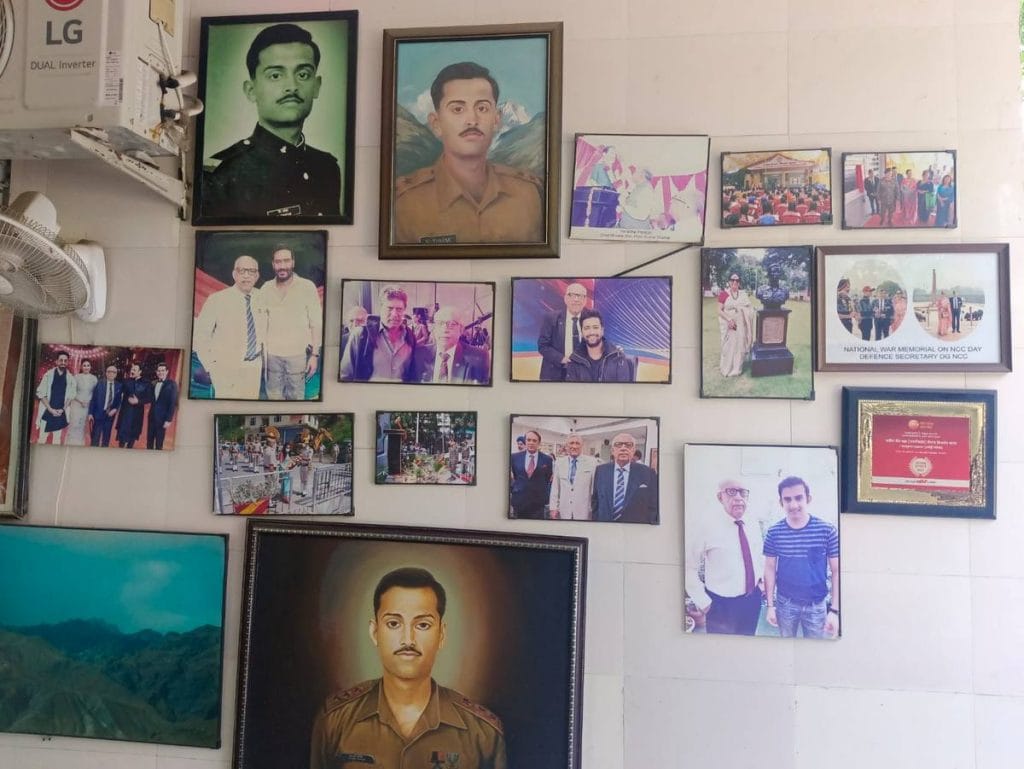
Also Read: These 5 Indian Army, IAF heroes are the faces of the Kargil conflict
Remembering ‘Robin’
Even the streets are a daily reminder of Captain Vijayant Thapar’s bravery in Sector 29, Noida. The family’s house stands in Vijayant Enclave, and the road outside is now called Vijayant Thapar Marg.
Before stepping into the house, visitors pass through a small outdoor gallery. There are photographs, awards, and a nearly five-foot-tall framed copy of his letter.
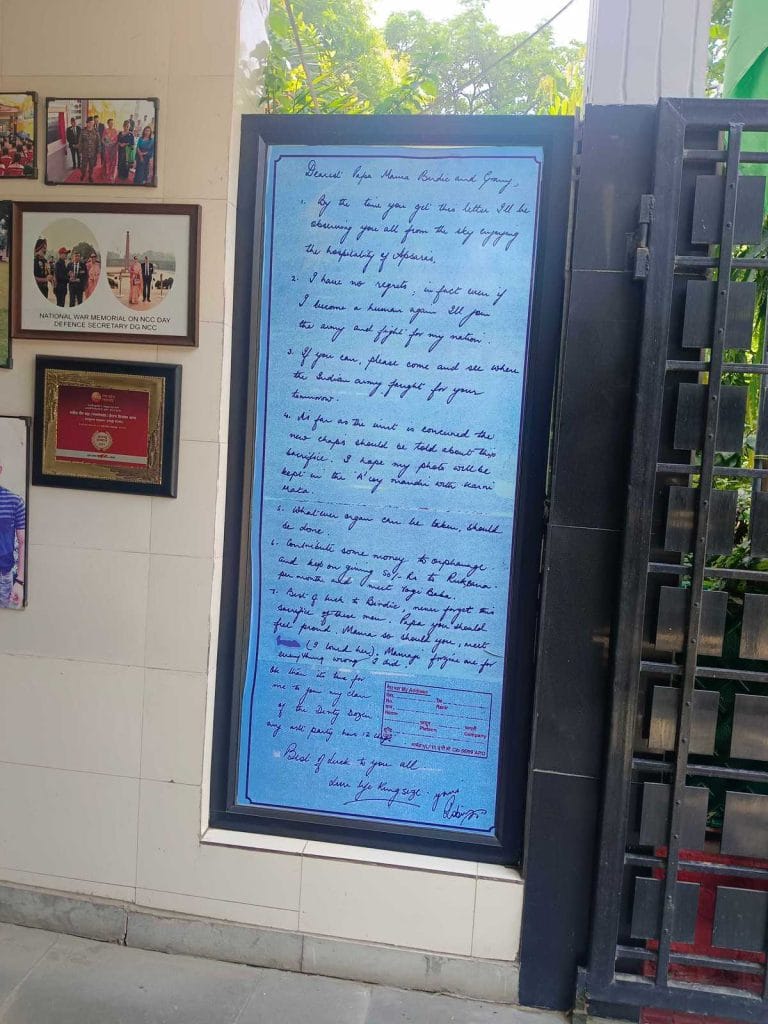
But it’s not just photos in uniform or news clippings that tell his story. Scattered everywhere are images of a small bird—a robin.
It all goes back to 29 December 1976, the day Vijayant was born in Nangal, Punjab. The very first word Colonel Thapar whispered upon seeing his newborn son was ‘Robin’.
“When I saw him in the hospital crib, he was kicking and moving his hands and legs,” he recalled. “The first thing that came to my mind, seeing him so energetic and full of life, was ‘Robin’. And from that moment, we started calling him Robin.”
He was later named Vijayant, after an Indian Army tank. But the nickname Robin stuck. And after he was gone, the bird became a symbol of him in the house.
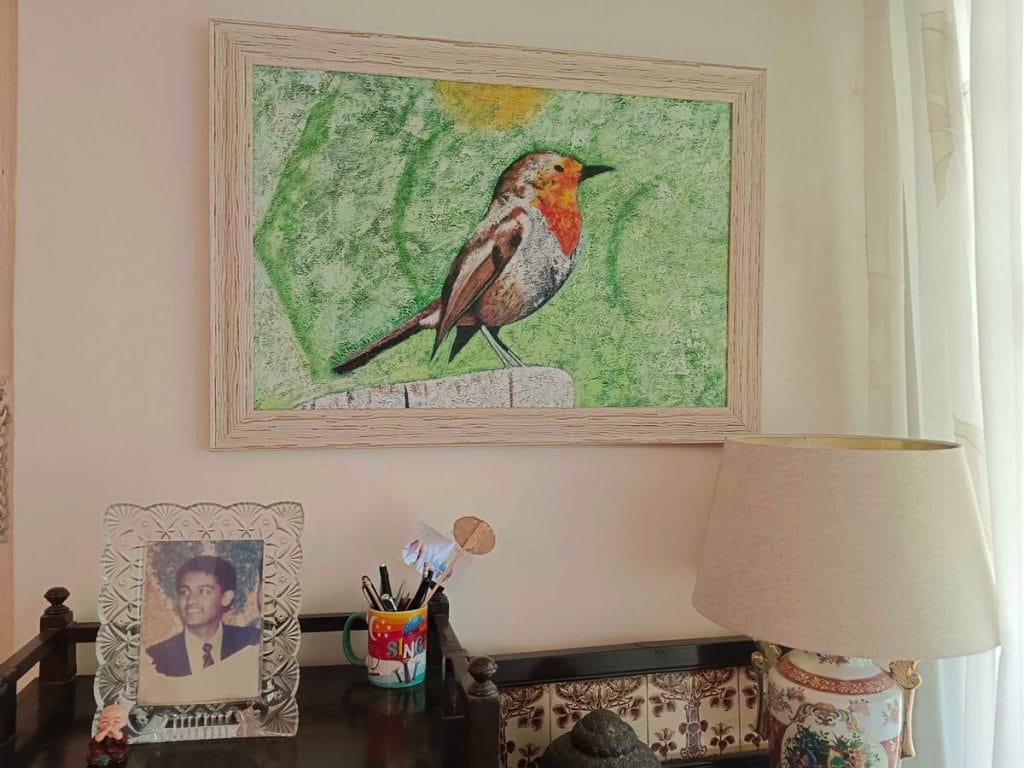
One delicate drawing shows a robin perched on a branch in soft shades of blue and orange. In a corner of the living room, there’s an oil painting of a robin against a green backdrop. Further in, a small frame holds a robin etched onto a real leaf.
“Robin has never left his home. He’s always here with us—in his belongings, in every trace he left behind,” said Tripta Thapar. “Every belonging of his tells a story, each one an echo of who he was.”
It’s not easy to revisit the place where you lost a family member, year after year. But at the same time, it’s one of the proudest moments of our lives
-Tripta Thapar
Vijayant came from a family with four generations of service in the Indian Army. He always knew he would continue that proud legacy. As a child, he would stage mock battles around the house. He would make his younger brother play Pakistan while he played India.
“We never had to tell him to join the Indian Army. It was always visible in his eyes and in his spirit to fight for the country,” said Colonel Thapar.
Even as Vijayant confronted death, that spirit never left him.
“I have no regrets. In fact, even if I were born as a human again, I would join the Army and fight for my nation,” he wrote in his last letter.
‘A good and kind human being’
It’s a soldier’s farewell and a son’s tribute to his parents, but Captain Vijayant’s letter is also a record of how he saw the world, and what he wanted to leave behind.
One of his neatly numbered last wishes read: “Contribute some money to orphanage and keep on giving 50/- Rs to Ruksana per month.”
Shortly after graduating from the Indian Military Academy and being commissioned into the Army in December 1998, Vijayant was posted to Kupwara. During his patrols, he noticed a child who stood silently at the same spot each day. She was around five or six, never smiled, never spoke. Curious, he asked around and found out why—terrorists had shot her father in front of her. Her name was Ruksana.
“After he got to know the story of the girl, he started talking to her,” said Tripta Thapar. “Within a month, she began speaking and laughing again.”
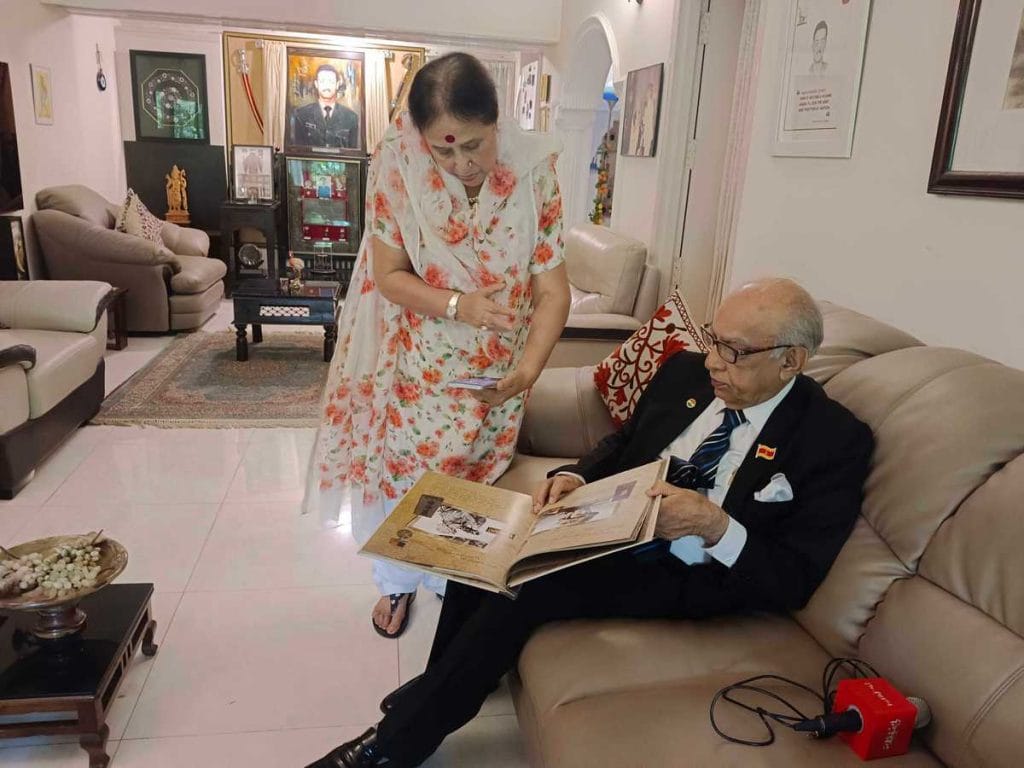
Her son, she added, loved writing letters and sharing stories from the field. Sometimes, he’d ask them to help out people he’d met. The family have never stopped supporting Ruksana.
In one of those letters, he asked his family to send Rs 50 a month to Ruksana. Every time they visit Dras, they make it a point to meet her. They’ve also helped with her education and recently attended her wedding.
“What does it take to become a good soldier? If you’re a good and kind human being, you’ll be a good soldier too,” said Colonel Thapar.
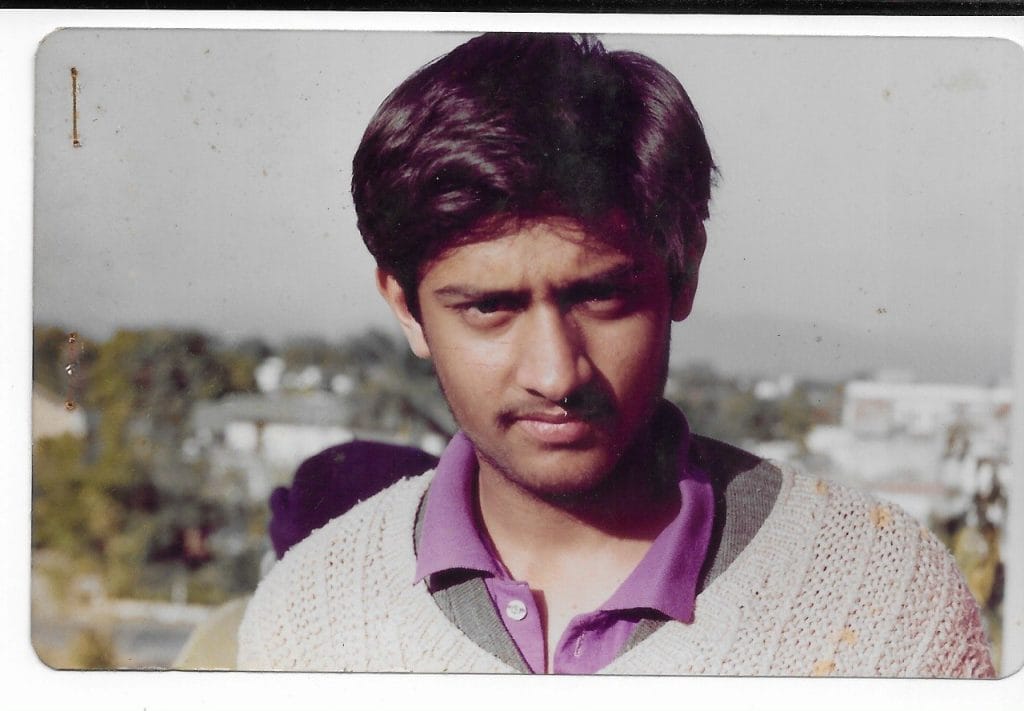
He recalled how was always ready to help others and couldn’t bear to see anyone in pain.
“Even as a child, he would give away his pocket money if someone needed it,” he said. “He was incredibly kind. And that kindness made him not only the bravest, but also the finest soldier.”
On 25 May 1999, Captain Vijayant’s unit was ordered to move to Dras to engage Pakistani soldiers entrenched in strategic positions at Tololing, Tiger Hill, and the surrounding heights. He was assigned the mission of leading his platoon to capture Three Pimples, Knoll, and Lone Hill. They managed to secure Knoll after a fierce battle but Captain Vijayant Thapar was fatally struck by a burst of enemy fire. His orderly Jagmal Singh and company commander Major Padmapani Acharya also died in the assault.
Also Read: Of valour and sacrifice: A look at Kargil conflict through famous battles and maps
A bedroom turned museum
This year, Captain Thapar’s younger brother Vijender, an engineer, travelled to Dras in place of their ailing father.
“It’s not easy to revisit the place where you lost a family member, year after year. But at the same time, it’s one of the proudest moments of our lives,” said Tripta Thapar, scrolling through her phone gallery, filled with photos of Vijayant.
Every year, from May to July, the Thapars field dozens of calls and messages—interviews, invitations, event requests. They visit schools, colleges, and private gatherings and speak about their heroic son.
“We don’t just share the story of a soldier or our son—we share the story of a brave and kind human being to inspire the nation and its youth,” said Colonel Thapar. “It’s important that young people are brave and honest towards their country, no matter what field they work in.”
He walked into Vijayant’s old bedroom, which is now a museum to his memory.
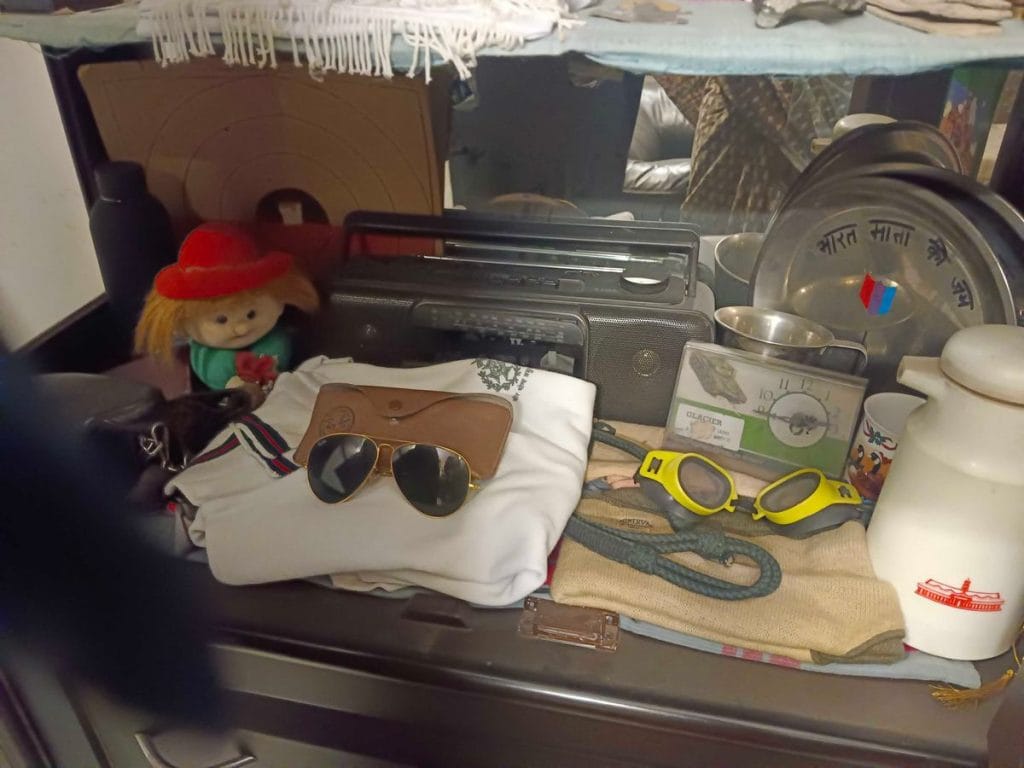
He was a devoted follower of Hanuman, with pictures of the deity still on the walls. He loved swimming, and his yellow goggles are a reminder of the classes he took after completing 50 laps, a challenge set by his father. His favourite song was Sandese Aate Hain from the Bollywood movie Border. His black cassette player and tapes are still intact.
Colonel Thapar gently touched his son’s Army jacket hanging on a wall, then picked up a camera.
“He once asked me to buy him a camera, but I had refused,” he said. “However, on the day he was leaving for Kupwara, I handed it to him, and he was truly happy.”
He paused as he browsed through Vijayant’s photos in his laptop, from a smiling toddler to a smart young man in Army unform.
“He was truly handsome,” he said softly.
In 2020, Colonel Thapar published a biography of his son, Vijyant at Kargil, co-authored with Neha Dwivedi, the daughter of another Kargil martyr, Major CB Dwivedi. It traces Vijayant’s early life, his training, and anecdotes shared by those who knew him best.
“Live life King Size” were the last words in Vijayant’s letter. His parents often repeat the phrase.
“He lived his life like a king, doing what he wanted to,” Colonel Thapar said. “And now we’re living that way too, just as he asked us to.”
(Edited by Asavari Singh)



